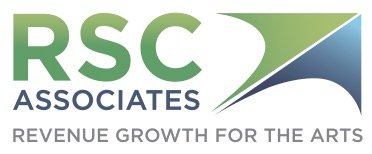WHOSE PATRON IS IT, ANYWAY?
With Bob Swaney
Why can’t revenue departments just get along? No matter your organization’s size, ticket sales and fundraising priorities are sometimes viewed as “in conflict,” with the patron put in the middle. Let’s get rid of the internal competition, and instead, make sales and giving come together in complementary fashion.
Read the full transcript below or click the button to listen.
FULL TRANSCRIPT OF THE PODCAST
Why is collaboration important? Because, bluntly, the prize here is to get more patrons who will attend more performances, support at higher levels, and stay in the family for a long, long time.
Let’s open the discussion by looking at a few of the Common Difficulties in Collaboration:
Common Difficulties in Collaboration:
1. Misaligned Goals and Objectives: You can also label this as “the pressure to meet goals.” Marketing must focus on promoting performances and attracting audiences, while fundraising aims to secure donations and grants. But they are most often dealing with the exact same patrons at the exact same time. If not carefully plotted, this creates many misalignments and puts the efforts at cross-purposes.
2. Communication Breakdowns: Poor communication (or non-communication) between departments can result in missed opportunities, misunderstandings, and a lack of coordination in campaigns and initiatives. In some organizations, it’s because everyone is busy. In others, it’s because someone views their goals as more important than anyone else’s. Whatever the reason, low communication dramatically affects coordination and cooperation.
3. Resource Allocation Challenges: Limited resources, such as budget and personnel, can strain both departments and hinder their ability to collaborate effectively on joint projects. This often leads us back up to #2 – communication breakdowns. Also, whenever a new staff member enters into the picture, their understanding of ‘collaboration’ may be wildly different from the established culture.
4. Fear of Scarcity: Whether you are a fundraiser who believes patrons will give less if they spend money on tickets, or a marketer who believes asking for philanthropic support will “steal” or “scare away” your ticket buyers, I’m here to say that your fears are unfounded. Put your data points away and stop making fear-based decisions. Marketing doesn’t “own” the database and development doesn’t have entitlements because it often brings in more revenue than ticket sales. The patrons don’t belong to your departments – in fact, you belong to the patrons.
There is another way and that’s through using Collaborative Strategies. How can earned revenue folks and contributed revenue folks work more closely and effectively?
Collaborative Strategies
1. Shared Vision and Strategy Development: Begin by aligning both departments' goals and objectives with the overall mission of the organization. Develop a shared vision for success and create strategies that integrate marketing and fundraising efforts.
2. Regular Cross-Departmental Meetings: Whether you have big departments, small departments or you’re a one-person “money maker,” coordinate and collaborate to set the priorities. Establish a schedule for regular meetings between marketing and fundraising teams to discuss upcoming campaigns, initiatives, and ways to collaborate effectively. This promotes transparency and ensures everyone is on the same page. Communicate and Share. Share and Communicate. Get it?
3. Data Sharing and Analysis: With a few exceptions, most performing arts organizations have invested in a single database to track patron transactions and related interactions. Even if yours doesn’t, find ways to share relevant data and analytics between departments to gain insights into audience preferences, donor behavior, and campaign performance. Use this data to inform decision-making and optimize marketing and fundraising strategies. The more you know and the more you can communicate, the better overall patron-related decisions you can make.
4. Integrated Campaign Planning: Collaborate on integrated campaigns that combine marketing promotions and fundraising appeals. RSC clients have absolutely mastered the “annual fund” ask on the subscription renewal form, with a collective $100,000s raised each year. But there are many other opportunities to collaborate each year. Work to coordinate messaging, timing, and channels to maximize impact and reach both audience and donor segments effectively.
5. Cross-Training and Skill Development: I got my start in arts management as a telemarketing / telefunding phone room campaign manager. It gave me wonderful insights as to what made ticket sales successful and fundraising grow…which made it MUCH easier for me to think “collaboratively” as my career matured over the years. If you are responsible for revenue, find your own path to understanding both sides of revenue-generation. Encourage cross-training and skill development opportunities between marketing and fundraising teams. This enhances understanding of each other's roles and responsibilities, fostering a more cohesive and collaborative working environment.
6. Performance Evaluation and Feedback Loop: Establish key performance indicators (KPIs) that measure the success of joint initiatives and collaborations. Regularly evaluate performance, gather feedback from both departments, and use insights to iterate and improve future efforts.
My best advice:
Be sincere and consistent in adopting a Patron-Centric Approach
Adopt a donor-centric approach that prioritizes personalized communication and engagement strategies.
Collaborate on donor stewardship initiatives, such as exclusive events and recognition programs, to enhance donor loyalty and support.
In conclusion, collaboration between the marketing and fundraising departments in performing arts organizations is 100% essential for achieving shared goals and maximizing revenue and cultivating patron longevity.
And if you remember just one thing, let it be this: By working cooperatively to address common challenges, implement collaborative strategies, and share success stories and best practices, your organization can foster a culture of success in promoting the arts and securing vital support.



